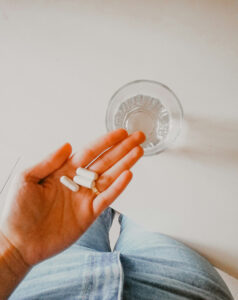Most people know about hot flashes and brain fog during menopause. But what about joint pain, muscle loss, or waking up feeling like you ran a marathon in your sleep?
Welcome to the club no one talks about—the Musculoskeletal Syndrome of Menopause.
In a brilliant review article, Dr. Vonda Wright and her colleagues introduce this long-overdue term to describe the collective aches, pains, and physical decline so many women face during the menopause transition. And the kicker? It’s all linked to one thing: estrogen loss.
What Is the Musculoskeletal Syndrome of Menopause?
This syndrome includes:
- Arthralgia (unexplained joint pain)
- Sarcopenia (loss of muscle mass and strength)
- Bone loss/osteoporosis
- Tendon and ligament injuries
- Cartilage damage and early-onset osteoarthritis
- Increased inflammation and slower healing
Sound familiar?
An estimated 70% of women experience musculoskeletal symptoms during perimenopause or menopause. A whopping 25% will be disabled by them. Yet this is still one of the most under-recognized aspects of menopause medicine.
Estrogen’s Role in Muscles, Joints & Bones
Estrogen isn’t just about reproductive function—it’s a key player in bone density, muscle regeneration, inflammation control, and cartilage health.
Without it:
- Your bones weaken
- Your muscles shrink
- Your joints hurt
- Your tendons become injury-prone
- Your ability to recover from strain or injury? Sluggish, at best
But these changes don’t show up on standard imaging. Which is why so many women are dismissed when they report aches, stiffness, or weakness in midlife.
Why Naming This Syndrome Matters
Giving it a name—The Musculoskeletal Syndrome of Menopause—gives it weight. It tells women, “No, you’re not imagining this.” It gives clinicians a framework for action, not dismissal. And it opens the door to targeted prevention and treatment.
What Can You Do?
- Hormone Therapy (MHT): Estrogen therapy can reduce joint pain, improve muscle regeneration, preserve bone density, and reduce fracture risk.
- Resistance Training: Lifting weights isn’t optional. It’s protective medicine for your muscles and bones.
- Nutrition & Supplements: Calcium, Vitamin D, magnesium, Vitamin K2, and even creatine can all help support musculoskeletal health.
- Early Screening: Bone scans and muscle assessments in your 40s and 50s—not your 60s—can catch changes before they’re irreversible.
Bottom Line
If your body suddenly feels older than you are, it’s not in your head. It’s your hormones. The musculoskeletal syndrome of menopause is real—and it’s treatable.
Menopause doesn’t have to mean slowing down. It just means getting smarter about your care.
Call to Action:
Wondering if your aches and pains are hormonal? Book a free 15-minute call with me to talk about how I can help you. You deserve to feel powerful—at every age.
Visit www.portlandmenopausedoc.com to learn more.4

Dr. Aoife O’Sullivan is a family physician, board certified by the American Board of Family Physicians and a menopause specialist, certified by the North American Menopause Society, dedicated to empowering women through their midlife health journeys. She is the founder of Portland Menopause Doc, co-founder of the Portland Menopause Collective, podcaster on The Dusty Muffins, and an expert speaker, frequent podcast guest and active contributor to midlife women’s health research.
Learn more











